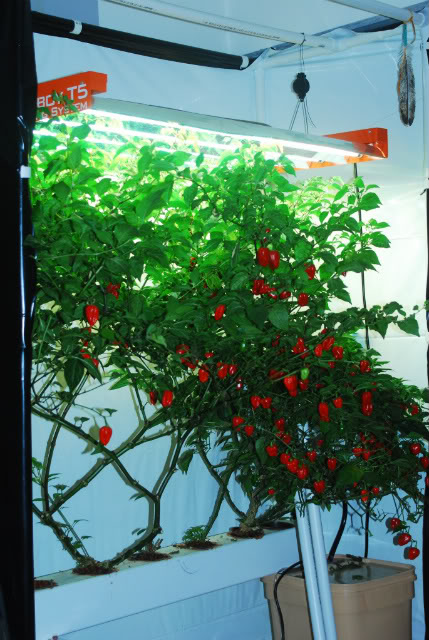Xpur, I don't know what calculations you are using there, but there is something VERY important missing.
Calculating PPFD makes only sense if you take the growing size/space into account. A statement like "the older marshydro put out 483 PPFD" doesn't make any sense (sorry) if you don't specify what size growing area you refer to. (PPFD = photon density/light intensity for a given space, based on how much lumens a light puts out)
If the old Marshydro lights "put out 483 PPFD" but this intensity only applies to 10 cm right under the light and then greatly falls off just a little to the side, this means you cannot light-out a typical growing space, say 4x2' with a Marshydro and say "it outputs 483". Besides that "it outputs PPFD" it technically not correct, sorry to be picky

I can tell you so much that there is NO WAY that the Marshydro gives 483 PPFD let alone 918 PPFD, at least not for a reasonable growing space. (918 PPFD would be a shit-ton of light, like for flowering "medicinal plants", 350-400PPFD would be recommended for hot peppers).
I have 6x CREE CXB3590 COBs on a growing space which is now roughly 4x4', and I calculated the (theoretical) PPFD in my space from those 6 COBs together, driven at about 32W to 390ish PPFD for my entire area. (This can easily be done since all the data of the CREE COBs is available).
I just want to avoid that someone reads what you say here and thinks that he could get a MH "300W" light and get 483 PPFD or 918PPFD over a reasonable area covering several plants - DEFINITELY NOT. You MAY (perhaps) get 483PPFD right above one single plant, but there is hardly any spread or penetration.
Here to give an example: If I measure the "light intensity" (PPFD) of a tiny point from a laser, I might get some high value, let's just say 1500PPFD for the tiny dot where I measure. But this doesn't mean I can use a laser pointer to grow anything.
Of course, there are still more factors to consider...calculating the theoretical PPFD (for a growing space) from the lumens etc. is a VERY rough estimate because it doesn't actually say how much light actually hits the plants, it doesn't consider distance to the fixture, like you're already say the inverse square law, optics and things like reflective walls. So the only way would be to actually MEASURE at the plant level how much light is hitting the plants...and then of course there is the problem that you cannot just measure lumens/lux because this doesn't say anything about the light plants need. (A white light, with green in it, may measure "lots of lumens" and lux, but its pointless since plants don't really use green light)
TLDR: The cheap Marshydros are "ok" for low/moderate light requirements and especially if you're on a budget. But they are GREATLY outdone by CREE COBs, especially when it comes to efficiency, eg. lumens/Watt. Overall I think there is not even a comparison. However, for peppers, vegetables etc...I think they might be "ok" but I wouldn't expect too much from them.

